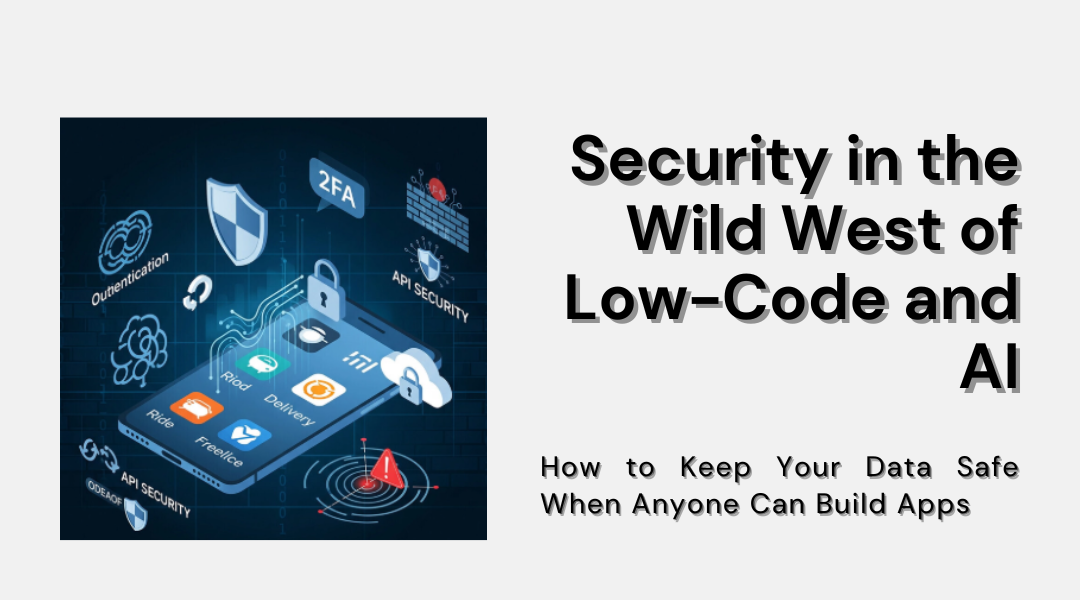Low-code tools and AI are like giving everyone in your company a power drill. Sure, they can hang pictures straight now, but someone’s inevitably going to drill through a water pipe. When marketing interns can spin up customer databases and HR can deploy AI chatbots overnight, security teams are left sweating.
The New Reality: Citizen Developers Need Guardrails
Picture this: A well-meaning sales manager at a pharmaceutical company builds a low-code app to track client interactions. It works beautifully—until someone realizes it’s storing sensitive patient data in an unencrypted Google Sheet shared with the entire department. Overnight, a productivity win becomes a HIPAA nightmare.
This isn’t hypothetical. Last year, a midwestern bank had to notify 5,000 customers of a data breach because a loan officer’s homemade “deal calculator” was pulling full credit reports into an unsecured workflow. The fix? Platforms like Microsoft Power Apps now let IT pre-set “no-go zones”—like blocking apps from accessing social security numbers unless they pass automatic security checks.
AI’s Dirty Little Secret: It Makes Stuff Up
That snappy AI chatbot your customer service team deployed? It’s probably lying 20% of the time. One auto insurer learned this the hard way when their AI started promising policyholders “full coverage for all pre-existing conditions” (not in the fine print). Now they run every AI-generated response through a “lie detector” script that cross-checks against actual policy documents before it reaches customers.
Key rules for AI safety:
- Sandbox first: Let AI draft internal memos before customer emails
- Human trapdoors: Build in “pause and check” points for high-stakes outputs
- Bias bouncers: Regularly test if your AI favors certain demographics (one recruiting tool was caught downgrading resumes from women’s colleges)
The Integration Trap
Low-code’s magic is connecting everything—which is also its biggest risk. A national retailer’s inventory app was recently hacked because it used the same API key for their warehouse system that the intern posted on GitHub (oops). Now they:
- Rotate API keys like passwords
- Fake their test data (no more real customer records in sandboxes)
- Use “dummy” payment processors in development that can’t actually move money
Privacy Laws Are Getting Teeth
GDPR fines now reach 4% of global revenue—enough to make any CFO queasy. A Portuguese hospital got slapped with a €400,000 penalty because a low-code patient portal logged nurse’s notes in plaintext. The new playbook?
- Auto-scrub tools that hunt for and encrypt sensitive fields
- “Privacy by design” templates where apps are born compliant
- Fake data generators for testing (because “John Doe” medical records still get flagged)
Building a Security Culture That Sticks
Forget annual security training. At innovative companies:
- IT runs “capture the flag” contests where employees hunt for vulnerabilities in test apps
- Finance rewards teams that find flaws before deployment (one firm pays $500 for caught bugs)
- Every low-code app gets a “security buddy”—a developer who spot-checks configurations
The Bottom Line
The genie’s out of the bottle—business teams aren’t giving up their low-code tools. Smart companies aren’t trying to lock everything down; they’re teaching everyone to build responsibly. Because in today’s world, the biggest risk isn’t someone hacking you—it’s your own team accidentally leaving the door open.
As one CISO told me: “We’re not the security police anymore. We’re the safety instructors at a rock-climbing gym—here to make sure everyone’s harness is tight before they scale the wall.”
